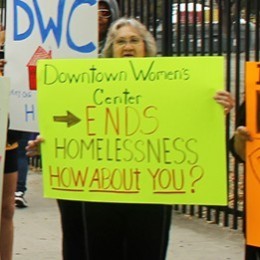
Volunteers are an integral part of the nonprofit world. Most nonprofits can’t operate without their volunteers. Not only do they provide their time and skills to help support your cause at no cost, but volunteers are ten times more likely to donate to your organization. The more volunteers and the more donors you get for your organization, the better. This means it is really important that you give them an engaging and fulfilling volunteer experience so they keep coming back and they keep donating.
I am on the board of the Downtown Women’s Center, where we have 5,000 volunteers who provided more than 25,000 hours of service in 2014, which is the equivalent of roughly 15 full-time employees. We have 60 full-time, paid employees, so 15 is a good chunk and adds to our ability to support our mission in a cost-effective way.
What Volunteers are Looking For
It is important to think about what your volunteers want. This can help you when trying to recruit new volunteers and inspire your current ones. Most are looking for a meaningful experience. Often the younger generation wants to volunteer in groups with their friends, so it is important to think of volunteer activities you can you match them up with that allow them to do that. This same generation also wants to see some immediate results as well, so make sure that you communicate the impact of the work that they are doing.
Before They Start
Part of making sure the experience is fulfilling is to do your background work. First, you should screen all your volunteers to reduce risk. This can include making sure they are able to do the assigned work, making sure the work is safe for them to do, and even making sure they actually want to do the work. Have each volunteer sign an agreement saying they agree to work without pay and put them through an orientation and training program before they start volunteering.
At the Downtown Women’s Center, we also require every single volunteer to go through an orientation and also at least one volunteer training program — possibly more than that depending on the type of volunteer activity that they’re engaged in. If they’re performing services in our kitchen, they might have just one or two training sessions, but if they’re doing any other work in our medical and mental health clinic, a different type of training is required. We have found that if we require our volunteers to go through an orientation and training, they put effort into their work and are more likely to keep their commitments when it comes to volunteer activities. It follows the thought process that working for something makes it more valuable. We don’t make it burdensome, but we do make it a requirement for becoming a volunteer.
Orientation, proper training, and picking the right volunteers is important — but creating a truly fulfilling experience also means communicating that they make a huge difference in your organization.
Making Volunteers Your Pro Bono PR Team
A lot more people will hear about your organization if you leverage and use your volunteers effectively and train them to be your cheerleaders in the public arena. Including ways for them to be advocates for your nonprofit in your orientation or trainings will only position you better in the long run.
Volunteers can help extend your nonprofit’s reach. At the Downtown Women’s Center, we encourage all of our volunteers to tweet about events that are important to our organization, share them on Facebook and extend the social media reach. These efforts can be pretty impressive and can help you reach younger donors as well. You can have a whole army of volunteers really lobbying on behalf of your nonprofit organization. Volunteers can also help bring in their friends, family, and colleagues, many of whom are excited to share the experience.


